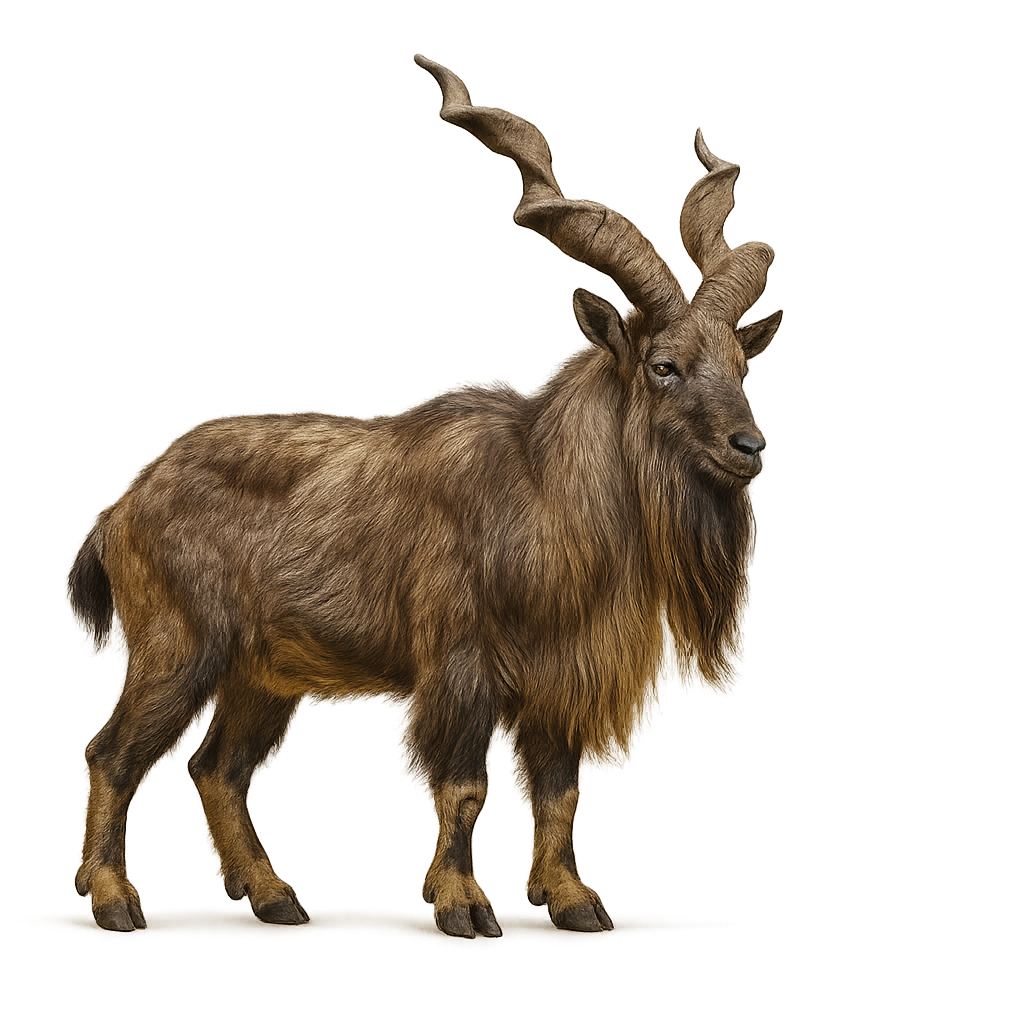Your wildlife photography guide.
Explore the markhor in detail, study its behavior, prepare your shots.
Where to observe and photograph the markhor in the wild
Learn where and when to spot the markhor in the wild, how to identify the species based on distinctive features, and what natural environments it inhabits. The WildlifePhotographer app offers tailored photography tips that reflect the markhor’s behavior, helping you capture better wildlife images. Explore the full species profile for key information including description, habitat, active periods, and approach techniques.
Markhor
Scientific name: Capra falconeri

IUCN Status: Vulnerable
Family: BOVIDAE
Group: Mammals
Sensitivity to human approach: Suspicious
Minimum approach distance: 60 m
Rut period: November to December
Gestation: 155-170 jours
Births: April to June
Habitat:
Mountains, dry forests, and steppes
Activity period :
Primarily active during the day, with peak activity in the morning and late afternoon.
Identification and description:
The Markhor is a wild goat species native to the mountains of Central Asia, primarily found in Afghanistan, Pakistan, Tajikistan, and India. It stands about 1.2 to 1.5 meters tall at the shoulder, with a body length of 1.5 to 2 meters, and weighs between 30 and 115 kg, with males generally being larger and more massive than females. The Markhor is famous for its impressive spiral horns, which can grow up to 1.5 meters long in adult males. Its coat is thick, typically brown or gray, with lighter fur on the belly and legs. It lives in mountainous and rocky areas, often at altitudes between 1,000 and 3,000 meters. The Markhor is an herbivore, feeding on mountain vegetation, including shrubs, leaves, and grasses. Although it is an agile climber and skilled at navigating steep terrain, it is also preyed upon by large predators such as snow leopards. The Markhor is classified as vulnerable due to overhunting, habitat loss, and human disturbances, but conservation efforts have helped stabilize its population in some areas.
Recommended lens:
300 mm – adjust based on distance, desired framing (portrait or habitat), and approach conditions.
Photography tips:
Approach slowly and discreetly, using a telephoto lens to capture images from a distance, as the Markhor is an agile and cautious animal that can easily move away if it feels threatened.
Photograph early in the morning or late in the afternoon, when the light is soft and the Markhor is more active, often searching for food or moving through rocky mountains.
Capture moments of natural behavior: The Markhor is an exceptional climber, and you can photograph it on steep slopes, feeding or resting in rocky areas.
Be patient and respectful: The Markhor can be difficult to spot due to its mountainous and rugged habitat. Wait for moments when it is more visible without disturbing its activity.
The Markhor is a vulnerable species due to habitat loss and poaching. It is crucial to respect its natural space, especially in its mountainous environments. Do not disturb its natural behaviors and follow local conservation rules to preserve this species and its habitat.
The WildlifePhotographer App is coming soon!
Be the first to explore the best nature spots, track rutting seasons, log your observations, and observe more wildlife.
Already 1 432 wildlife lovers subscribed worldwide

